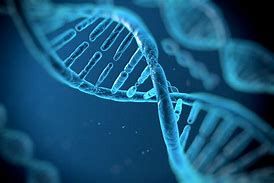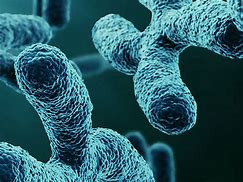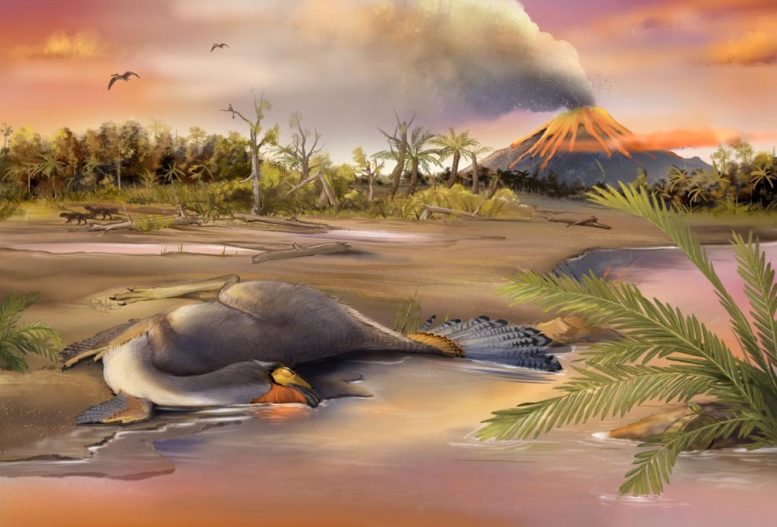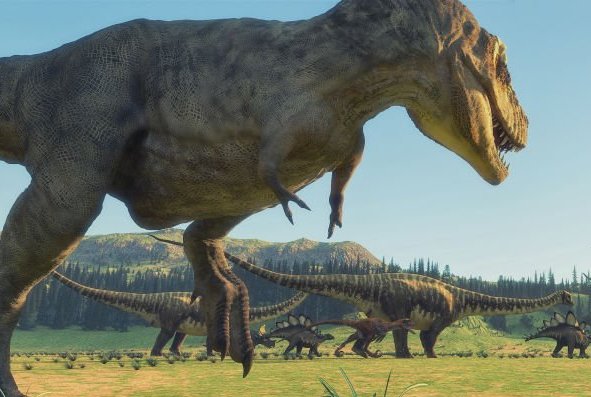People have been fascinated about the possibilty of bringing dinosaurs back to life, but no progress has been confirmed, until recently, when DNA was found in the fossils of Caudipterix. Could this discovery bring to the revival of prehistoric creatures and if so, what are the ethics of it?

A team of scientists from the Institute of Vertebrate Paleontology and Paleoanthropology (IVPP) of the Chinese Academy of Sciences and from the Shandong Tianyu Museum of Nature (STM) has isolated exquisitely preserved cartilage cells in a 125-million-year-old dinosaur from Northeast China that contain nuclei with remnants of organic molecules and chromatin.
The creature, baptized Caudipterix, was a small chicken-sized omnivore with long tail featheres. It treked the shores of the reservoir Jehol Biota in Liaoning during the Early Cretaceous.
“Geological data has accumulated over the years and shown that fossil preservation in the Jehol Biota was exceptional due to fine volcanic ashes that entombed the carcasses and preserved them down to the cellular level,” said LI Zhiheng, Associate Professor at IVPP
The scientists of the IVPP extracted a bit of distal articular cartilage in the right femur of this specimen, decalcified it and used microscopic and chemical methods for analization. They realized that all the cells had been mineralized by silicification after the death of the animal. This silicification is most likely what allowed the excellent preservation of these cells.
They mainly found two types of cells: healthy cells at the time of fosilization and not-so-healthy cells that were porous and dying when being fossilized. “It is possible that these cells were already dying even before the animal died,” said Alida Bailleul, Associate Professor at IVPP.
Cell death is a process that occurs naturally throughout the lives of all animals. But being able to place a fossilized cell into a specific spot within the cell cycle is quite new in paleontology. This is one of the objectives of the IVPP scientists: to improve cellular imagery and DNA in fossils.
Furthermore, the team isolated some cells and stained them with a chemical used in biological laboratories worldwide. This purple chemical, called hematoxylin, is known to bind to the nuclei of cells. After staining the dinosaur material, one dinosaur cell showed a purple nucleus with some darker purple threads. This means the 125-million-year-old dinosaur cell has a nucleus so well-preserved that it retains some original biomolecules and threads of chromatin.
Chromatin within the cells of all living organisms on Earth is made of tightly packed DNA molecules. The results of this study thus provide preliminary data suggesting that remnants of original dinosaur DNA may still be preserved.But to precisely test this, the team needs to do a lot more work and use chemical methods that are much more refined than the staining they used here.
organisms on Earth is made of tightly packed DNA molecules. The results of this study thus provide preliminary data suggesting that remnants of original dinosaur DNA may still be preserved.But to precisely test this, the team needs to do a lot more work and use chemical methods that are much more refined than the staining they used here.
“Let’s be honest, we are obviously interested in fossilized cell nuclei because this is where most of the DNA should be if DNA was preserved,” said Alida Bailleul. Last year she published study a reporting exceptional nuclear and biomolecule preservation in the cartilage cells of a dinosaur from Montana.”So, we have good preliminary data, very exciting data, but we are just starting to understand cellular biochemistry in very old fossils. At this point, we need to work more.”
The team insists they need to do many more analyses and even develop new methods to understand the processes that may allow biomolecule preservation in dinosaur cells, because no one has ever successfully sequenced any dinosaur DNA. In the ancient DNA community, sequencing methods are used to confirm if ancient DNA is preserved in fossils. So far, these methods have only worked for young fossils (not much older than about one million years), but they have never worked for dinosaur material. Dinosaurs are considered way too old to retain any DNA. However, the chemical data collected by the scientists from IVPP and STM suggest otherwise.
Reconstruction of the Jehol Biota and the well-preserved specimen of Caudipteryx. Credit: Image by ZHENG Qiuyang
Try to answer the weekly question
Reference: “Nuclear preservation in the cartilage of the Jehol dinosaur Caudipteryx” by Xiaoting Zheng, Alida M. Bailleul, Zhiheng Li, Xiaoli Wang and Zhonghe Zhou, 24 September 2021, Communications Biology.
DOI: 10.1038/s42003-021-02627-8


Maxine Morrison
Woah! I’m really enjoying the template/theme of this site.
It’s simple, yet effective. A lot of times it’s tough
to get that “perfect balance” between superb usability and appearance.
I must say that you’ve done a fantastic job with this.
Also, the blog loads very fast for me on Opera.
Exceptional Blog!
Patricia Goldthwaite
It’s the best time to make a few plans for the future and it is time to
be happy. I’ve learn this submit and if I could I want
to suggest you few fascinating issues or tips. Maybe you can write subsequent articles relating to this
article. I want to read even more issues about it!
Easter Loveday
I like what you guys are up too. This type of clever work and coverage!
Keep up the wonderful works guys I’ve incorporated
you guys to my own blogroll.